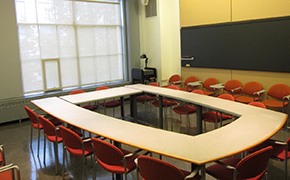This Course at MIT pages are part of the OCW Educator initiative, which seeks to enhance the value of OCW for educators.
Course Overview
This page focuses on the course 4.619 Historiography of Islamic Architecture as it was taught by Professor Nasser Rabbat in Fall 2014.
This seminar presented a critical review of literature on Islamic architecture in the last two centuries and analyzed its historical and theoretical frameworks. It challenged the tacit assumptions and biases of standard studies of Islamic architecture and addressed historiographic and critical questions concerning how knowledge of a field is defined, produced, and reproduced.
Course Outcomes
Course Goals for Students
This course included weekly reading and writing assignments and required active participation in discussions. The course aimed at providing the student with a general overview of the literature on Islamic architecture and helped him/her in learning how to read texts critically. Another goal for this course was to help students deduce arguments from thick and dense descriptions.
Possibilities for Further Study/Careers
Many students will continue to take more historiographic courses after completing this one. Most students who took this course were SMArchS or PhD students focusing on the history, theory, and criticism of architecture. These students were usually preparing for a career in academe.
Curriculum Information
Prerequisites
Students were required to obtain permission of the instructor.
Requirements Satisfied
H-Level Graduate Credit ![]()
Offered
Every other fall semester
Student Information

Breakdown by Year
All of the students in this course were graduate students.
Breakdown by Major
1/2 were SMArchS students in the Aga Khan Program, 1/3 were PhD students in the HTC Program, and one student was in the ACT Program. All of these programs are at the department of architecture.
Typical Student Background
Most students that took the class had a professional architectural degree already. Two students were art historians by training, one had an urban planning masters degree and one was an artist.
During an average week, students were expected to spend 12 hours on the course, roughly divided as follows:
In Class
Met 1 time per week for 3 hours per session; 13 sessions total.
Out of Class
Students spent time outside of class working on short presentations and the final research paper.
Semester Breakdown
| WEEK | M | T | W | Th | F |
|---|---|---|---|---|---|
| 1 |  |  |  |  |  |
| 2 |  |  |  |  |  |
| 3 |  |  |  |  |  |
| 4 |  |  |  |  |  |
| 5 |  |  |  |  |  |
| 6 |  |  |  |  |  |
| 7 |  |  |  |  |  |
| 8 |  |  |  |  |  |
| 9 |  |  |  |  |  |
| 10 |  |  |  |  |  |
| 11 |  |  |  |  |  |
| 12 |  |  |  |  |  |
| 13 |  |  |  |  |  |
| 14 |  |  |  |  |  |
| 15 |  |  |  |  |  |
| 16 |  |  |  |  |  |
 No classes throughout MIT
No classes throughout MIT Lecture session
Lecture session Assignment due date
Assignment due date No class session scheduled
No class session scheduled Student presentations
Student presentations

 Room 1 of 1
Room 1 of 1 